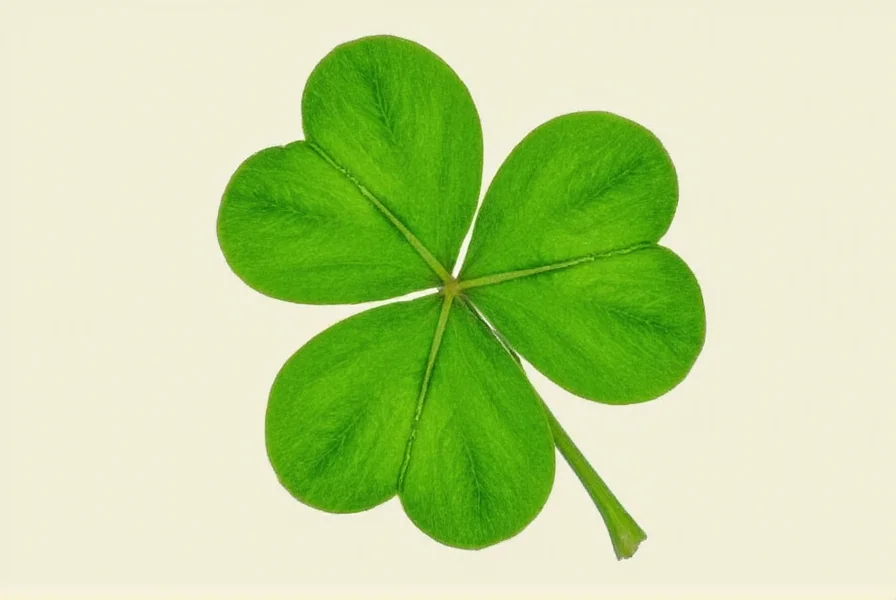When searching for information about “trey clover,” most users encounter confusion between proper botanical terminology and common misspellings. This article clarifies the meaning, botanical significance, and cultural context of three-leaf clovers while addressing frequent misconceptions about this widespread plant.
Understanding Clover Terminology
The confusion around “trey clover” stems from linguistic evolution and common misspellings. “Trefoil” (pronounced ˈtriːfoil) is the correct botanical term derived from Old French, describing any plant structure with three leaflets. Clover species in the Trifolium genus naturally exhibit this trifoliate pattern—a characteristic so consistent it's embedded in their scientific name (Tri = three, folium = leaf).
The term “trey” originates from card games, where it denotes the three of any suit. This gaming terminology occasionally bleeds into casual speech but has no botanical basis. When researching what trey clover actually means, understanding this distinction prevents misinformation.

Botanical Reality of Three-Leaf Clovers
Clover plants (primarily Trifolium repens or white clover) naturally produce three leaflets per leaf. This isn't a special variety but the species' standard morphology. The three-leaf configuration serves important biological functions:
| Leaf Configuration | Natural Occurrence | Biological Purpose |
|---|---|---|
| Three-leaf (standard) | 99.99% of clover plants | Optimal photosynthesis and resource allocation |
| Four-leaf (mutation) | Approx. 1 in 5,000 plants | Genetic anomaly with no survival advantage |
| Five+ leaves | Extremely rare | Multiple genetic mutations |
The widespread belief that three-leaf clovers carry special meaning likely stems from confusion with four-leaf clover folklore. In reality, the three-leaf pattern represents nature's efficient design rather than symbolic significance. When gardeners ask why is my clover only growing three leaves, the answer is simple: that's how clover is supposed to grow.
Cultural Misconceptions and Historical Context
The association of clovers with luck originates from ancient Celtic traditions, where shamrocks (three-leaf clovers) symbolized the earth's tripartite nature. Irish legend credits St. Patrick with using the shamrock to explain the Christian Holy Trinity, cementing its cultural significance.
Contrary to popular belief, three leaf clover spiritual meaning differs significantly from four-leaf variants. While four-leaf clovers acquired luck symbolism during the Victorian era as rare anomalies, three-leaf clovers maintained religious and cultural symbolism without the “luck” association. Understanding this distinction helps clarify why trey clover isn't considered lucky in traditional folklore.
Practical Identification Guide
Identifying true clover species requires attention to specific characteristics beyond leaf count:
- Leaf shape: Clover leaflets display a distinctive inverted heart shape with white “V” markings
- Flower structure: Small spherical flower heads containing numerous individual blossoms
- Growth pattern: Low-growing perennial with creeping stems that root at nodes
- Seasonality: Most active growth occurs in spring and fall
When examining how to identify trefoil clover plants, remember that environmental factors like soil quality and moisture can affect leaf size and color but won't change the fundamental three-leaflet structure.
Addressing Common Questions
Many gardeners and nature enthusiasts have persistent questions about clover varieties. The confusion between “trey” and “trefoil” terminology often leads to misinformation about plant characteristics. Understanding the difference between trefoil and four leaf clover helps separate botanical fact from folklore.
While cultivating clover in lawns or gardens, remember that the appearance of occasional four-leaf variants results from genetic mutations, not special care techniques. The persistent search for how to grow trey clover plants with extra leaves reflects this common misunderstanding of clover biology.
Conclusion
The term “trey clover” represents a common linguistic confusion rather than a distinct botanical category. Understanding that trefoil clover is simply the natural three-leaf form helps separate horticultural fact from folklore. When researching clover varieties, focusing on accurate terminology like “trefoil” or “three-leaf clover” yields more reliable information than the misspelled “trey” variant. This knowledge empowers gardeners, nature enthusiasts, and researchers to engage with clover biology accurately while appreciating both its scientific reality and cultural significance.










 浙公网安备
33010002000092号
浙公网安备
33010002000092号 浙B2-20120091-4
浙B2-20120091-4